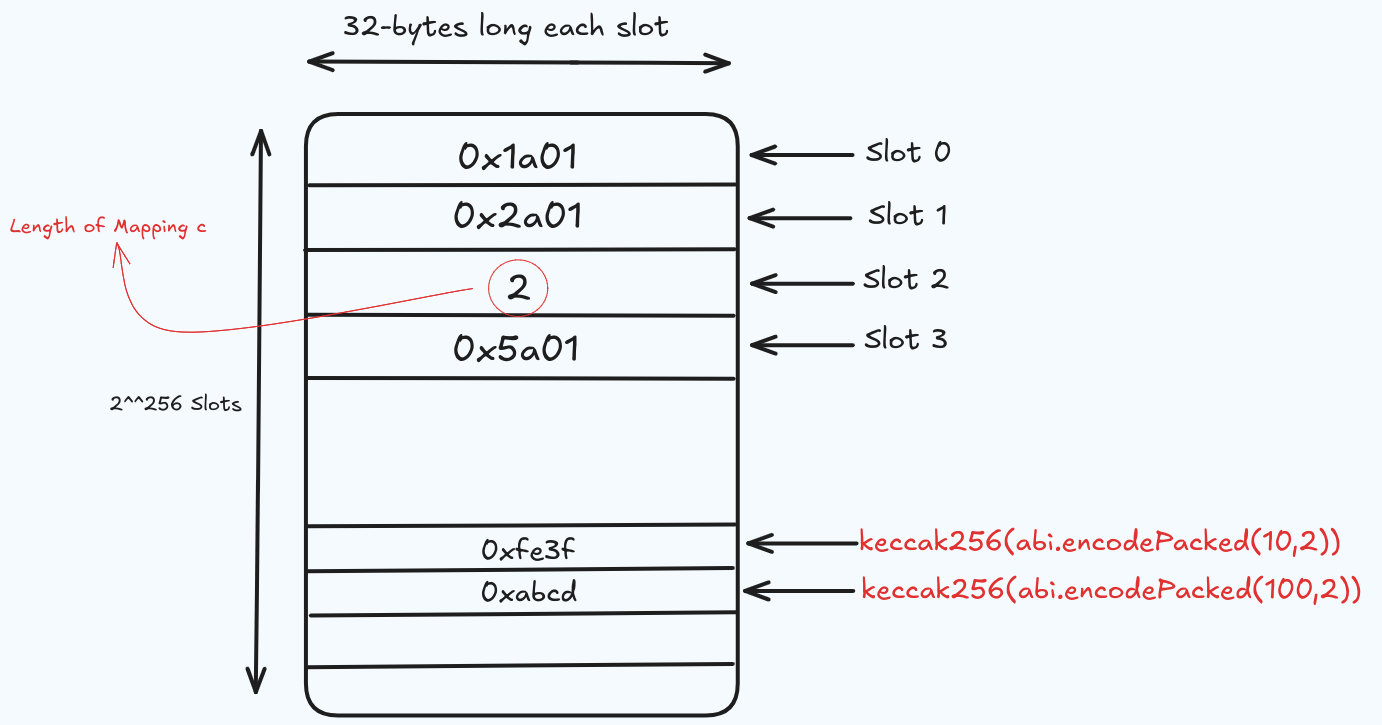Storing Mappings in Solidity's Storage
 Mansoor Butt
Mansoor Butt
Okay let’s first look at the code
contract Demo {
uint256 a = 0x1a01; // Slot 0
uint256 b = 0x2a01; // Slot 1
mapping(uint => uint) c; // Slot 2
uint256 d = 0x5a01; // Sot 3
constructor(){
c[10] = 0xfe3f;
c[100] = 0xabcd;
}
function getMappingValue(uint256 key,uint mappingSlot) returns (uint256)
{
// Line 13
uint256 slot = uint256(keccak256(abi.encode(key,mappingSlot)));
return slot;
}
function getSlotvalue(uint slot) public view return(bytes32) //Line 15
{
bytes32 value;
assembly{
value := sload(slot);
}
return value;
}
}

So storing Mapping in Solidity is very similar to storing Dynamic Arrays , with a minor difference . In the example above , We have a uint to uint mapping ‘ c ’ . In the constructor, we push two uints into the mapping c
c[100]=0xabcd
c[10] = 0xfe3f
We have 2 numbers of key 10 and 100, So now to retrieve element of key 10 , we will again follow the 2-step strategy , as discussed in the Dynamic Storage Article , for step 1 we use the funtion getMappngValue and we pass key=10 and mappingSlot=2 because the mapping c is allotted slot-2 . in Line 13 we use the keccak256 hashing Algorithm and it is applied to the product(multiplication) of the key and mapping slot.
As a result we get the slot address of c[10] and finally following step-2 we retrieve the element by using the getSlotValue function.
Subscribe to my newsletter
Read articles from Mansoor Butt directly inside your inbox. Subscribe to the newsletter, and don't miss out.
Written by
